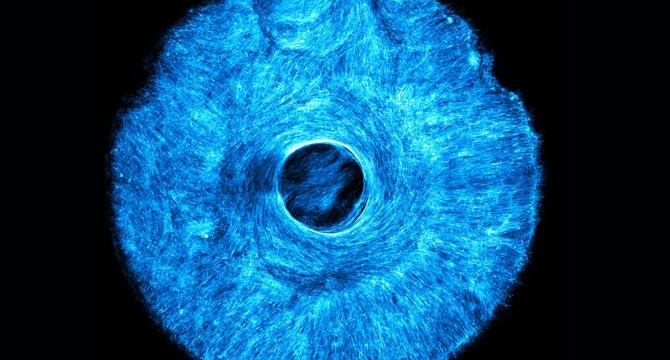Brighter Side of News
2w
12

Image Credit: Brighter Side of News
First-ever multi-directional artificial muscles could revolutionize robotics
- Engineers and scientists have developed a breakthrough method at MIT, allowing muscle tissues to contract in multiple directions using STAMP, offering flexible, energy-efficient motion for biohybrid robots and medical applications.
- The STAMP approach guides muscle cell growth along microscopic patterns in a cost-effective manner and enables precise alignment of muscle fibers for improved functionality in biohybrid robots and tissue engineering.
- The method allows muscle fibers to grow in complex, multi-directional architectures while retaining their ability to generate force, overcoming limitations of previous unidirectional muscle tissue engineering.
- By creating microscopic grooves in soft hydrogels using 3D-printed stamps, STAMP enables muscle contraction in multiple directions without the need for expensive equipment or rigid scaffolds.
- The researchers showcased the versatility of their method by designing an artificial iris that mimics natural iris function, demonstrating the potential of STAMP in designing biohybrid robots with multi-degree-of-freedom motion.
- STAMP has implications beyond robotics, with applications in tissue engineering, drug screening for neuromuscular diseases, regenerative medicine, and soft robotics, offering a flexible and sustainable alternative to traditional rigid robots.
- The stamping technique could be extended to other cell types like neurons and cardiac muscle cells, potentially advancing bioelectronics and heart tissue engineering.
- MIT's breakthrough in engineered muscle tissue using STAMP simplifies the alignment of muscle fibers in complex orientations, driving innovation across fields like drug testing models and soft robotics.
- This study, published in Biomaterials Science, marks a significant step forward in biohybrid robotics and tissue engineering, with plans for exploring new muscle architectures and activation methods in future research.
- The technology holds promise for creating artificial tissues closely resembling natural counterparts, offering new possibilities in bioengineered muscle-powered systems across various applications.
- Contributions to the research were made by scientists at MIT and Tel Aviv University, emphasizing the interdisciplinary collaboration in advancing biohybrid engineering for future innovations.
Read Full Article
Like
For uninterrupted reading, download the app